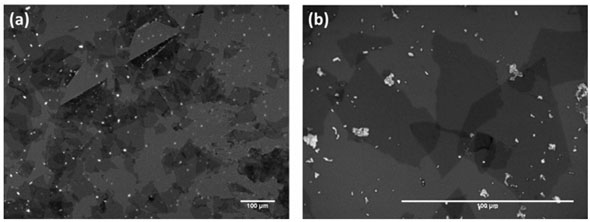| Mar 17, 2012 |
Scientists produce graphene using microorganisms
|
|
(Nanowerk News) Chemical reduction of graphene oxide (GO) flakes is widely used for the synthesis of graphene. In this process, the critical stage of reducing GO flakes into graphene requires the exposure of the GO to hydrazine. This reduction process has fundamental limitations for large scale production; in particular because of the hydrazine vapor is highly toxic.
|
|
The Graphene Research Group at Toyohashi Tech report on the synthesis of graphene by reducing graphene oxide using microorganisms extracted from a local river (see paper in Journal of Physics: "Microorganism mediated synthesis of reduced graphene oxide films").
|
 |
| Image of reduced GO sheets on a SiO2/Si substrate. (a) Optical microscope image; and (b) higher magnification.
|
|
The method developed by the Toyohashi Tech team was inspired by a recent report showing that graphene oxide behaves as a terminal electron acceptor for bacteria, where the GO is reduced by microbial action in the process of breathing or electron transport. Notably, the Toyohashi Graphene Research Group method is a hybrid approach, where chemically derived graphene oxide flakes are reduced by readily available microorganisms extracted from a river bank near the Tempaku Campus of Toyohashi University of Technology, Aichi, Japan. Raman scattering measurements showed that the GO flakes had indeed been reduced.
|
|
The approach offers a low-cost, highly efficient, and environmentally friendly method for the mass production of high quality graphene for the electronics industry.
|
|
|

